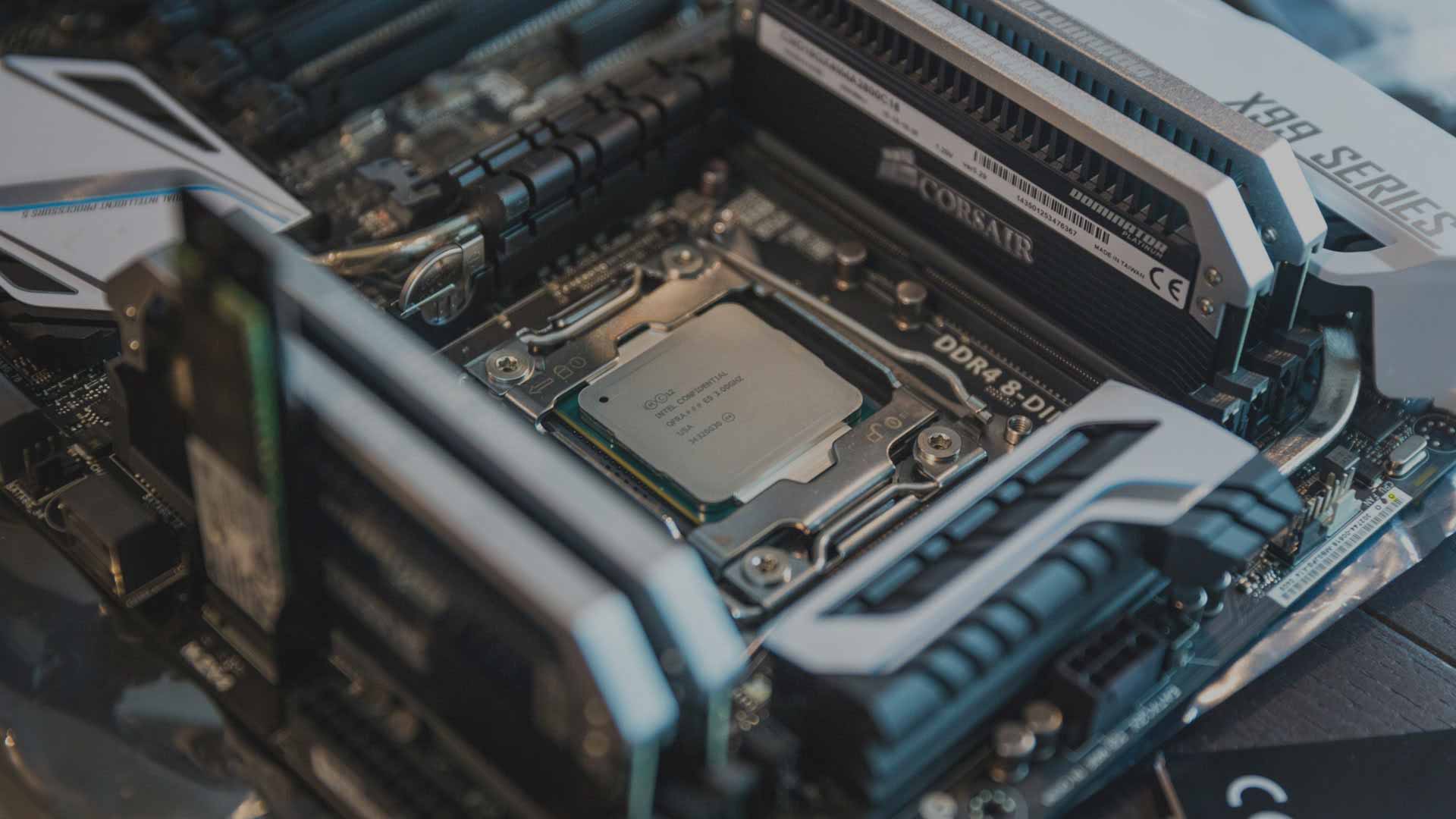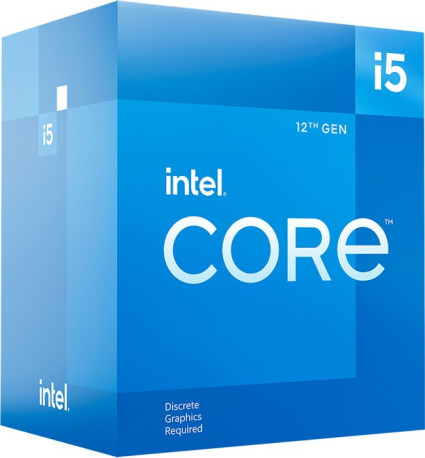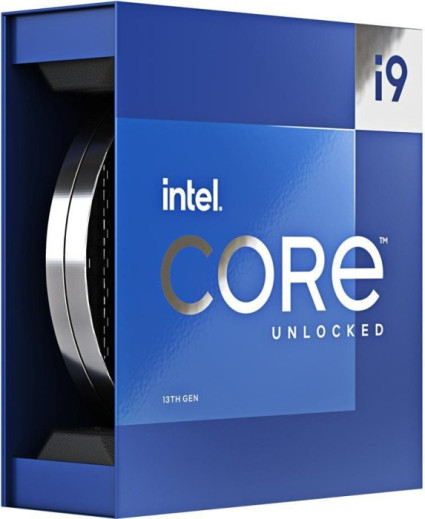
Intel Core i5-12400F vs. Intel Core i9-13900K
In diesem Vergleich von Intel Core i5-12400F versus Intel Core i9-13900K vergleichen wir die technischen Daten der beiden GPUs. Welche Grafikkarte ist schneller? Hier gibt es FPS & Benchmarks in Gaming und Anwendungen. Außerdem Daten zu Verbrauch, Effizienz (FPS pro Watt) und Preis-Leistung (FPS pro Euro).

Allgemeine Informationen
| Günstigster Preis |
|
|
| Serie | Intel Core i-12000 | Intel Core i-13000 |
| Chip-Architektur | Golden Cove | Raptor Cove (P-Core) + Gracemont (E-Core) |
| Codename | Alder Lake-S | Raptor Lake-S |
| Produktname | Intel Core i5-12400F | Intel Core i9-13900K |
Spezifikationen
Die Anzahl der Rechenkerne, die maximale Taktrate und die Größe des Cache können sich auf die Leistung in Spielen und Anwendungen auswirken. Mit 6 Kernen bietet der Intel Core i5-12400F deutlich weniger Kerne als der Intel Core i9-13900K mit 24 Rechenkernen. Der maximale Takt liegt beim Intel Core i5-12400F mit 4.40 GHz deutlich niedriger als beim Intel Core i9-13900K mit 5.80 GHz. Der Cache ist beim Intel Core i5-12400F mit 7.5 MB L2-Cache + 18 MB L3-Cache zu 32 MB L2-Cache + 36 MB L3-Cache deutlich kleiner als beim Intel Core i9-13900K.
| Kerne (Gesamt) | 6 | 24 |
| Anzahl P-Cores | 6C | 8C |
| Anzahl E-Cores | - | 16c |
| Basis-Takt | 2.50 GHz | 3.00 GHz |
| Takt P-Cores | 2.50 GHz | 3.00 GHz |
| Takt E-Cores | - | 2.20 GHz |
| Turbo-Takt | 4.40 GHz | 5.80 (Thermal Velocity Boost) GHz |
| Turbo P-Cores | 4.40 GHz | 5.80 (Thermal Velocity Boost) GHz |
| Turbo E-Cores | - | 5.40 GHz |
| Gesamter L2-Cache | 7.5 MB | 32 MB |
| Gesamter L3-Cache | 18 MB | 36 MB |
| Fertigung | Intel 7 | Intel 7 |
| Rechenleistung | - | - |
| Leistungsaufnahme (TDP) | 65W (Processor Base Power) 117W (Maximum Turbo Power) |
125W (Processor Base Power) 253W (Maximum Turbo Power) |
Mainboard-Kompatibilität
Sowohl der Intel Core i5-12400F als auch der Intel Core i9-13900K setzen auf den Sockel Intel 1700.
| Sockel | Intel 1700 | Intel 1700 |
| Chipsatz-Eignung | B660, B760, H610, H610E, H670, H770, Q670, Q670E, R680E, W680, Z690, Z790 | B660, B760, H610, H610E, H670, H770, Q670, Q670E, R680E, W680, Z690, Z790 |
| PCIe-3.0-Lanes | - | - |
| PCIe-4.0-Lanes | 4x | 4x |
| PCIe-5.0-Lanes | 16x | 16x |
RAM-Kompatibilität
Während Sie beim Intel Core i5-12400F bis zu 128 GB vom Typ DDR4/DDR5 im Dual Channel verbauen können, unterstützt der Intel Core i9-13900K bis zu 192 GB DDR4/DDR5 Arbeitsspeicher.
| Speicher-Controller | DDR4/DDR5 | DDR4/DDR5 |
| Anzahl Speicherkanäle | Dual Channel | Dual Channel |
| max. Speichermenge | 128 GB | 192 GB |
| ECC-Unterstützung | - | ✓ |
Grafik
| iGPU | - | ✓ |
| iGPU-Modell | - | Intel UHD Graphics 770 |
| iGPU-Takt | - | 0,30-1,65GHz |
| iGPU-Einheiten | - | 2Xe/32EU/256SP |
| iGPU-Rechenleistung | - | 0.87 TFLOPS (FP32) |
| iGPU-Architektur | - | Xe-LP / Gen 12.2, Codename "Raptor Lake GT1" |
| iGPU-Interface | - | DP 1.4a (7680x4320@60Hz), eDP 1.4b (5120x3200@120Hz), HDMI 2.1 (4096x2160@60Hz) |
| iGPU-Funktionen | - | 4x Display Support, 2x Codec Engines / Video Decode Boxes, Intel Clear Video HD, Intel Quick Sync Video, AV1 decode, H.265 encode/decode, VP9 encode/decode, HDCP 2.3, DirectX 12, OpenGL 4.5, OpenCL 3.0, Vulkan 1.0 |
Sonstiges
| Freier Multiplikator | - | ✓ |
| Stepping | C0/H0, Spec Code: SRL4W/SRL5Z | B0, Spec Code: SRMBH |
| Heatspreader-Kontaktmittel | Metall/verlötet | Metall/verlötet |
| Temparatur max. | 100°C (Tjunction) | 100°C (Tjunction) |
| Fernwartung | - | ✓ (Intel vPro Essentials, Intel vPro Enterprise) |
| Einführung | 2022/Q1 (4.1.2022) | 2022/Q3 (28.9.2022) |
| Herstellergarantie | 3 Jahre bei Intel® Boxed-Prozessoren (Info DE/Info EN) | 5 Jahre bei Intel® Boxed-Prozessoren durch erweiterte Garantieunterstützung (Info EN) |
CPU-Funktionen
| AES-NI | ✓ | ✓ |
| AVX | ✓ | ✓ |
| AVX2 | ✓ | ✓ |
| Boot Guard | ✓ | ✓ |
| CET | ✓ | ✓ |
| DL Boost | ✓ | ✓ |
| EIST | ✓ | ✓ |
| GNA 3.0 | ✓ | ✓ |
| Idle States | ✓ | ✓ |
| Instruction Set | ✓ | ✓ |
| ISM | ✓ | ✓ |
| MBEC | ✓ | ✓ |
| Optane Memory Support | ✓ | - |
| OS Guard | ✓ | ✓ |
| Secure Key | ✓ | ✓ |
| Speed Shift | ✓ | ✓ |
| SSE4.1 | ✓ | ✓ |
| SSE4.2 | ✓ | ✓ |
| Thermal Monitoring | ✓ | ✓ |
| VMD | ✓ | ✓ |
| VT-d | ✓ | ✓ |
| VT-x | ✓ | ✓ |
| VT-x EPT | ✓ | ✓ |
| XD Bit | ✓ | ✓ |
Spiele

- Intel Core i9-13900KAVG163.30 %1%162.46 %
- Intel Core i5-12400FAVG100.00 %1%100.00 %

- Intel Core i5-12400FAVG113.4 FPS1%79.5 FPS
- Intel Core i9-13900KAVG288.6 FPS1%209.7 FPS

- Intel Core i5-12400FAVG389.4 FPS1%227.7 FPS
- Intel Core i9-13900KAVG679 FPS1%326.4 FPS

- Intel Core i5-12400FAVG119 FPS1%78 FPS
- Intel Core i9-13900KAVG161.1 FPS1%113.1 FPS

- Intel Core i5-12400FAVG166 FPS1%111.3 FPS
- Intel Core i9-13900KAVG211.8 FPS1%160.2 FPS

- Intel Core i5-12400FAVG118.2 FPS1%85.3 FPS
- Intel Core i9-13900KAVG178.3 FPS1%124.2 FPS

- Intel Core i5-12400FAVG184 FPS1%114.1 FPS
- Intel Core i9-13900KAVG276.9 FPS1%171.6 FPS

- Intel Core i5-12400FAVG66.5 FPS1%50.5 FPS
- Intel Core i9-13900KAVG102.9 FPS1%75.8 FPS

- Intel Core i5-12400FAVG191.2 FPS1%108.8 FPS
- Intel Core i9-13900KAVG303 FPS1%171.4 FPS

- Intel Core i9-13900KAVG0.55 FPSIntel Core i5-12400FAVG1.53 FPS

- Intel Core i9-13900KAVG2.03 FPSIntel Core i5-12400FAVG3.09 FPS
Produktivität
Produktivität

- Intel Core i9-13900KAVG203.35 %Intel Core i5-12400FAVG100.00 %

- Intel Core i9-13900KPKT189032 PunkteIntel Core i5-12400FPKT63779 Punkte

- Intel Core i9-13900KPKT1540 PunkteIntel Core i5-12400FPKT1028 Punkte

- Intel Core i9-13900KPKT1040 PunkteIntel Core i5-12400FPKT605 Punkte

- Intel Core i9-13900KSEK161 SekundenIntel Core i5-12400FSEK499 Sekunden

- Intel Core i9-13900KPKT1970 PunkteIntel Core i5-12400FPKT616 Punkte

- Intel Core i9-13900KPKT3350 PunkteIntel Core i5-12400FPKT2247 Punkte

- Intel Core i9-13900KPKT20234 PunkteIntel Core i5-12400FPKT10438 Punkte

- Intel Core i9-13900KSEK49 SekundenIntel Core i5-12400FSEK121 Sekunden




